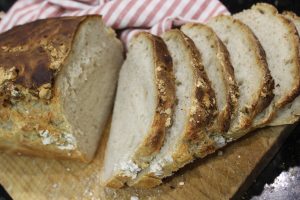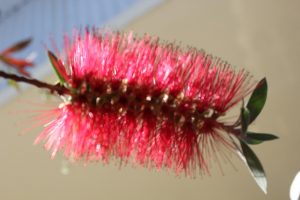eye surgery
A week ago I had surgery on my left eye. I have keratoconis which means my corneas are not a lovely rounded shape, but ‘conical’ with a lumpy surface. Keratoconus is when the cornea gradually thins and bulges, resulting in distorted vision. First diagnosed when I was about 19 I have been able to maintain reasonable eyesight by first wearing hard contact lenses for over 20 years, then soft lenses for about 25 years and then scleral lenses for 18 months. Scleral lenses are hard, large lenses which rest on the sclera, the white part of the eye.
Eventually my failing eyesight stopped me driving, painting and a whole lot of other things you never think about until you can’t see well enough to do them. I waited three and a half months for an appointment with an ophthalmalgic surgeon who could improve my eyesight.
And he did! Even when I awoke from surgery with a plastic shield taped over my eye I knew my eyesight was greatly improved. It was so exciting! The next day he told me my eyesight would continue to improve for about a week. It has and I can see better than I can remember. This changes everything. Now I am crossing the days off until I have surgery on the other eye.


Gathered up a few of the pairs of spectacles I’ve used over the past three years, hoping they’d help me read. I might not need any of them in a few months when I have surgery on my other eye but I’ll keep them just in case!
spanakopita


A classic Greek recipe, Spanakopita used to be my ‘go to’ for work lunches and visiting vegetarians. I never followed a recipe very carefully but always liked it hot or cold. Then I found a good supply of goats feta at about the same time Nagi of recipetineats.com (here) published her recipe for Spanakopita. I use her cookbook Recipe Tin Eats Dinner by Nagi Maehashi for inspiration when I don’t know what we’re having for dinner.


So I made a small dish (I’ll double the recipe next time) following her instructions. I’ve never added spring onions before nor lemon zest and juice, either, but will next time, too, as it added depth to the flavour. Nagi is a bit sniffy about using frozen spinach but that was what I had in the freezer and it tastes lovely. She suggests adding some grated cheese between the top layers of filo pastry, but I only had sheeps’ pecorino, which is very strong, so I omitted that step. Adding Greek yoghurt to the mix was new to me, too, but this is a very good pie so I’ll do it again.
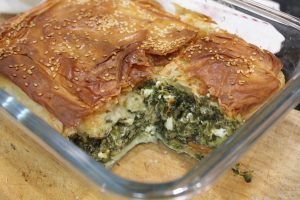

I melted the weight of butter listed in the recipe for buttering the pastry but ended up with some left over. It didn’t matter as I knew we were having asparagus with dinner. I poured the melted butter into a glass dish, added the juice and zest of the leftover lemon from making the spanakopita and microwaved it to make a sauce for the asparagus. Delicious!


THe spring garden
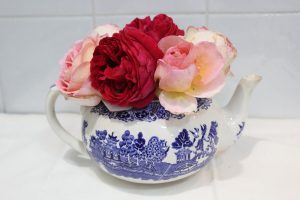

The roses have been decimated by chili thrip for the past two years. So far this year the bushes are strong and healthy and blooming beautifully. We have had no humidity, so the thrip may hatch and reappear if it is hot and sticky, but in the meanwhile we are picking masses and masses of beautiful, scented roses.




These ceramic spheres were discoloured and the paint was chipping off. I previously wrote about scrubbing and sanding them ready to repaint and here’s the photo of the finished spheres, back in the garden. I forgot to add the photo of the finished spheres lurking under the hydrangeas!


Scrubbed then sanded to smooth chipped edges. This small sander is so useful for a multitude of jobs.


Now dry and ready to repaint.
Back in the garden.
other things
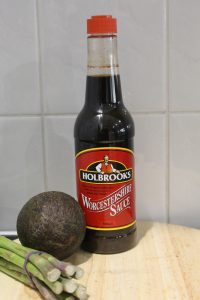

Needed a new bottle of Worcestershire Sauce during the week. It now comes in a plastic bottle. More plastic rubbish!


I’m a fan of magazines, especially those about architecture, interior design, gardens and food. Can’t believe how expensive they have become so subscriptions might have to be birthday and Christmas presents. Also deciding if I need quite so many. I think I do, especially now I can read then easily, again, rather than holding the page right up to my ‘better’ eye.







